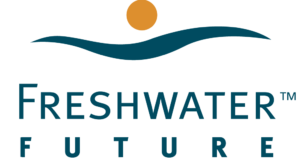For Immediate Release
Contact: Kristen Haitaian, Freshwater Future, kristen@freshwaterfuture.org
Moving into the 21st Century:
Celebrating and Improving U.S. EPA’s New Lead in Drinking Water Rule
Petoskey, Michigan | December 8th, 2023
This week, the U.S. Environmental Protection Agency released their draft version of the new Lead and Copper Rule Improvements. This rule will guide how local, state, and federal governments prevent and respond to lead in our drinking water. Freshwater Future has anticipated and helped guide the creation of this new rule by submitting a letter on how to incorporate environmental justice considerations, submitting almost 2,000 petition signatures to the EPA to encourage the strongest rule possible, and engaging EPA staff in Washington, D.C. to ensure accessibility and equal consideration of every individual that provides public comment. The rule is now open for public comment until February 5, 2024.
We are heartened to see substantial improvements in the draft rule:
- Required full replacement of lead and galvanized lead service lines
- A short replacement timeline of 10 years
- Lowering the Action Level from 15 to 10 parts per billion, which triggers additional protective actions
- A more robust lead sampling method that considers the highest lead level number between the first and the fifth liter samples.
- Added requirements for public transparency and communications during lead line inventory planning, pipe replacements, Action Level Exceedances, and other activities that may cause disturbances to lead lines
As an organization that is concerned with access to safe, clean, and affordable water for all, Freshwater Future believes the proposed rule can go further to protect public health. Specifically, the rule does not improve the loophole that does not require schools and childcare centers to test for lead in drinking water. The rule also exempts some water utilities from the 10-year lead service line replacement timeline. While lowering the action level from 15 to 10 parts per billion is a move in the right direction, there are no safe levels of lead. A health-based level is zero.
Freshwater Future staff are continuing to review the draft rule to understand what changes need to be made to make this rule as strong as possible. We are so thankful for everyone who has already used their voice to push for the strongest possible rule – you have made an incredible difference. Freshwater Future will continue to provide opportunities to impact this new rule including a webinar and an online action to easily and effectively send in your public comments. Stay tuned!








